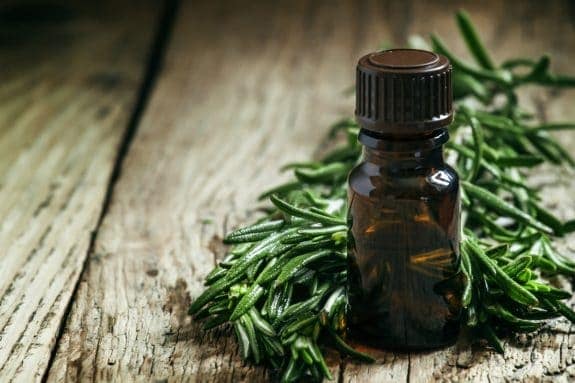It is quite common for individuals of any age and members of both sexes to suffer from cystic acne. Cystic acne is not only painful it can cause permanent scarring and even embarrassment for those who often have this type of acne. Choosing to use home remedies for cystic acne will not only be gentler on your delicate skin, but they will also effectively help to cure your acne fast.
Causes
Acne, more commonly known as pimples can be seen in several forms. One of the root causes of acne is a build-up of dead skin cells in combination with dirt along with an overproduction of sebum. The pores will become blocked with the excess sebum, dirt, and dead skin cells- scientifically known as comedones- and will become inflamed. When your pores become blocked with comedones they can be either white or black.
Comedone can be uninfected which leads to un-inflamed acne (such as blackheads or whiteheads) or they can become infected. When the comedones are infected or inflamed, it can lead to pustules, papules, and nodules, which are the most severe of the sort, and are often called cystic acne.
Cystic acne occurs when an infection goes deeper into the skin, usually showing up in the dermis layer. This will create a red bump that is often painful or itchy and varies in size. Although medically known as cystic acne, many refer to it as pimples, spots, or zits.
While it is unsure what environmental symptoms contribute to cystic acne, the main cause of cystic acne is hormonal changes. A hormone that everyone has called androgens is known for being a major part of cystic acne. When you are a teenager, your androgen hormones will begin to change. The influx and major changes of amounts of this hormone will contribute to cystic acne starting to appear.
While it is most commonly seen in teenagers, children as young as eight and adults as old as fifty can be seen with cystic acne. It is also common for cystic acne to appear in women while they are pregnant.
Your individual genetic code or DNA will determine the number of androgen hormones that you have and how much they will change. This in turn will also determine how severe, how long, and how often you will have cystic acne.
Although genetics and hormones are the main cause of cystic acne, there are a few factors that will irritate the skin and make cystic acne worse, and even cause scarring. Some of the ways that will further irritate your skin and make your cystic acne worse include:
- Not washing your face daily–cleansing your face with a gentle cleanser up to twice per day is essential for removing dirt and dead skin cells that contribute to worsening your acne
- Sleeping on your side with your face pressed against the pillow case– keeping your cheeks pressed against the pillow case throughout the entire (or most of) the night traps dirt and oil and cause build ups that will lead to further irritation and breakouts.
- Popping or scratching any pustules- Popping or scratching any pustules will make the infection go deeper, further irritate the infected pores, and deepen the scar tissue. Avoid popping or scratching any inflamed or infected area.
- Touching your face (or infected area)- Your hands and fingers are home to several germs, dirt, and oil glands. Touching the infected area will leave more oil and dirt on the surface that will then build up and cause the cystic acne to be worsened.
- Stress-High levels of stress can contribute to breakouts.
- Sweating- Living in areas with high humidity and/or excessive sweating can cause breakouts.
- Side effects- Some over-the-counter and prescription drugs can cause cystic acne as a side effect.
Cystic acne is known for causing scars due to being in the deeper layers of the skin. Cystic acne damages the collagen that is found in this area and scarring will form. There are three main types of acne scarring.
- Atrophic Scars- Appear sunken into the skin, but are actually quite shallow. These types of scars can be treated easily.
- Ice Pick Scars- Narrow and deep scarring that takes long periods of time to treat.
- Box-car Shaped Scars- Larger and deeper than the other types of scarring and is therefore the hardest to treat.
Signs and Symptoms
Cystic acne affects everyone in a different way, yet there are several tell-tale signs that will or can occur when cystic acne starts to appear.
A few of the major signs and symptoms of cystic acne are:
- Large, raised lumps reaching up to one inch appearing under the surface of the skin.
- Pain occurring when the area is touched.
- Itchiness in the affected area.
- A dull throbbing sensation at the site of the cyst
- Tenderness in the affected area
- Redness and inflammation
- Continued breakouts with multiple cysts
- Infection reappearing in the same place over and over
Cystic acne can appear in multiple places on the body. Most commonly cystic acne will show up on:
- The entire face(including the nose, forehead, jawline, cheeks, chin,)
- Back
- Shoulders
- Chest
- Buttocks
- Breast
- Scalp
- Back of the neck
Treatments

Since cystic acne is stubborn and painful individuals suffering from this skin condition will want to get rid of their acne quickly and effectively. Using herbal remedies will help to soothe, heal, and get rid of acne located on the face, jawline, nose, forehead, chin, chest, back, breast, scalp, back of the neck, buttocks, and shoulders. Since home remedies are from natural sources, they are effective and safe for getting rid of acne while pregnant.
1. Direct Application of Turmeric and Coconut Oil Mixture
Turmeric powder is a very powerful anti-bacterial agent. Whether it is consumed or applied directly to the skin, the curcumin found in turmeric will assist in fighting cystic acne by breaking down the cysts. When the curcumin is combined with lauric acid, (another powerful anti-bacterial agent found in coconut oil,) they work together to defeat acne inside and out.
In a recent study in Taiwan at Chang Gung University, the use of curcumin in fighting the Propionibacterium species, the main cause of inflammatory acne, was investigated. To deliver curcumin through the skin, a lipid (oil) vehicle was tested, and lauric acid (C:12) was found as the most effective lipid vehicle in inhibiting acne. The lipid vehicle of lauric acid was found to penetrate the skin and accumulate in the skin, along with the curcumin, providing an effective combination in inhibiting acne.
The conclusion of this study was very promising: “We successfully developed lipid vehicles to deliver curcumin to the skin for P. acnes inhibition. Combined effects of curcumin and lauric acid were found in inhibiting P. acnes. A histological examination confirmed normal skin morphologies after lipid vehicle treatments. In summary, curcumin-loaded vehicles are a promising tool for the topical delivery of curcumin to inhibit the growth of P. acnes.”
Required Ingredients:
- 1 tablespoon of turmeric powder
- 1 tablespoon of coconut oil
- Small bowl
Process:
Combine the turmeric powder with the coconut oil and stir until mixed well.
• Make sure there are no clumps.
• Cleanse the affected area and pat dry.
• Directly apply the mixture and leave for at least ten minutes.
• Rinse with cold water.
• Repeat up to three times per day until the condition improves.
Notes: Using fresh ground turmeric will be stronger than store-bought powder.
2. Taking Vitamin C
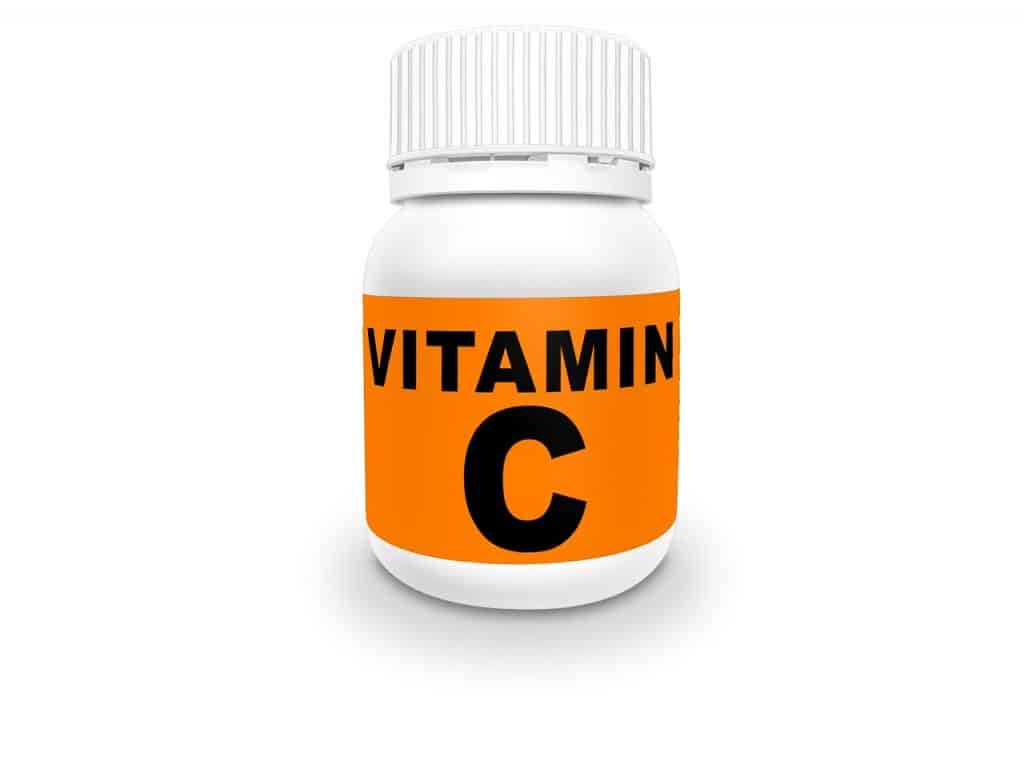
Consuming Vitamin C will not only help boost your immune system but it will allow for an increase in white blood cells. White blood cells are the body’s first defense in fighting any infection. Increasing your white blood cell count will help your body to send more white blood cells to the infection site, which will allow for a faster recovery time.
Required Ingredients:
- 100% Vitamin C Tablets
- 1 8-ounce glass of water
Process:
- Take one tablet up to twice per day.
Notes: Ensure to drink a full glass of water with the tablet for better absorption.
3. Topically Applying Apple Cider Vinegar

Apple Cider Vinegar, commonly called ‘ACV’, is a brilliant way to help clear cystic acne. Not only will the ACV help to fight bacteria and cleanse your skin, but it will also balance your skin’s natural pH levels. Cleaning your skin and having a better-balanced pH level will help your cystic acne breakouts clear up fast and even prevent future breakouts.
Required Ingredients:
- Cotton swabs
- Apple cider vinegar
Process:
- Cleanse the affected area and pat dry.
- Dip the cotton swab into the apple cider vinegar.
- Gently wipe the cotton swab on the affected areas.
- Let dry and leave overnight.
- Repeat each evening until you see visible results.
4. Applying a Honey Mask
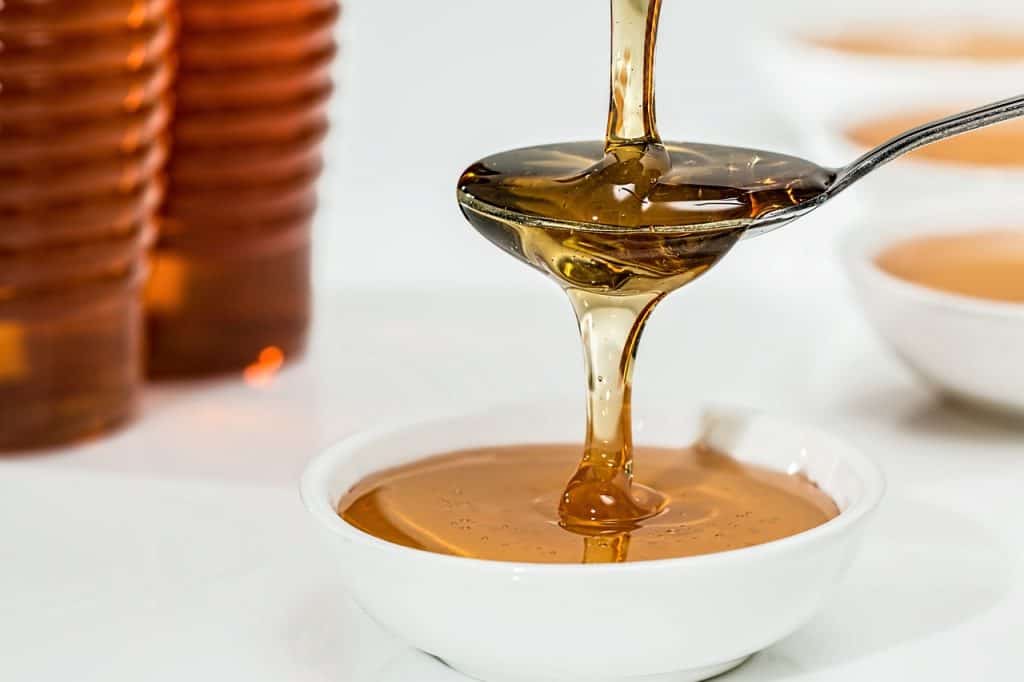
The natural anti-bacterial agents found in honey work wonders for healing several skin conditions, cystic acne included. Organic Manuka honey is one of the most powerful honey and using this type of honey will generate results quickly and gently.
Combining Manuka honey with a few other ingredients will create a skin-loving mask that will show results in no time.
Required Ingredients:
- 1 tablespoon of Organic Manuka honey
- 1 teaspoon of ground cinnamon
- 1 teaspoon of ground nutmeg
- Small bowl
Process:
- Gently cleanse the affected area and pat dry.
- Combine the ground spices with the honey in the small bowl and gently stir.
- Once mixed well, apply directly to the affected area and leave for 10 minutes.
- Rinse with cold water and pat dry.
- Repeat once a day, three times per week until the area has cleared.
Notes: Using freshly ground cinnamon and nutmeg will give the mask a more potent effect. This remedy is highly recommended for women who are pregnant.
5. Applying a Baking Soda and Epsom Salt Mask
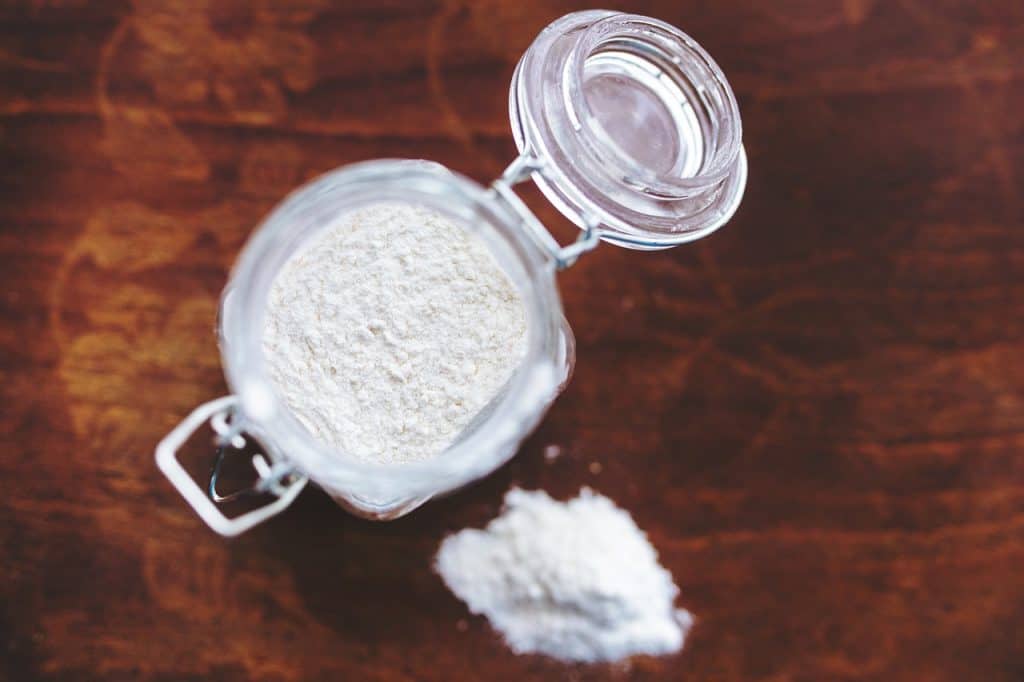
Baking soda will help to clear the pores as well as soothe inflammation and redness. When it is combined with Epsom salt, you will see the benefits of these acne-fighting ingredients almost immediately.
Required Ingredients:
- 2 tablespoons of Baking Soda
- 1 ½ tablespoons of Epsom Salt
- 1-1 ½ tablespoons of warm water
- Small bowl
Process:
- Combine the baking soda, Epsom salt and warm water in the bowl.
- Gently stir until a paste forms.
- Once the paste has formed directly apply it to the affected area.
- Let this mask rest of the affected area until it is dry. It can take up to ten to fifteen minutes.
- Gently rinse and pat dry.
- Repeat this mask twice per day until the cystic acne is no longer present.
6. Direct Application of Ice
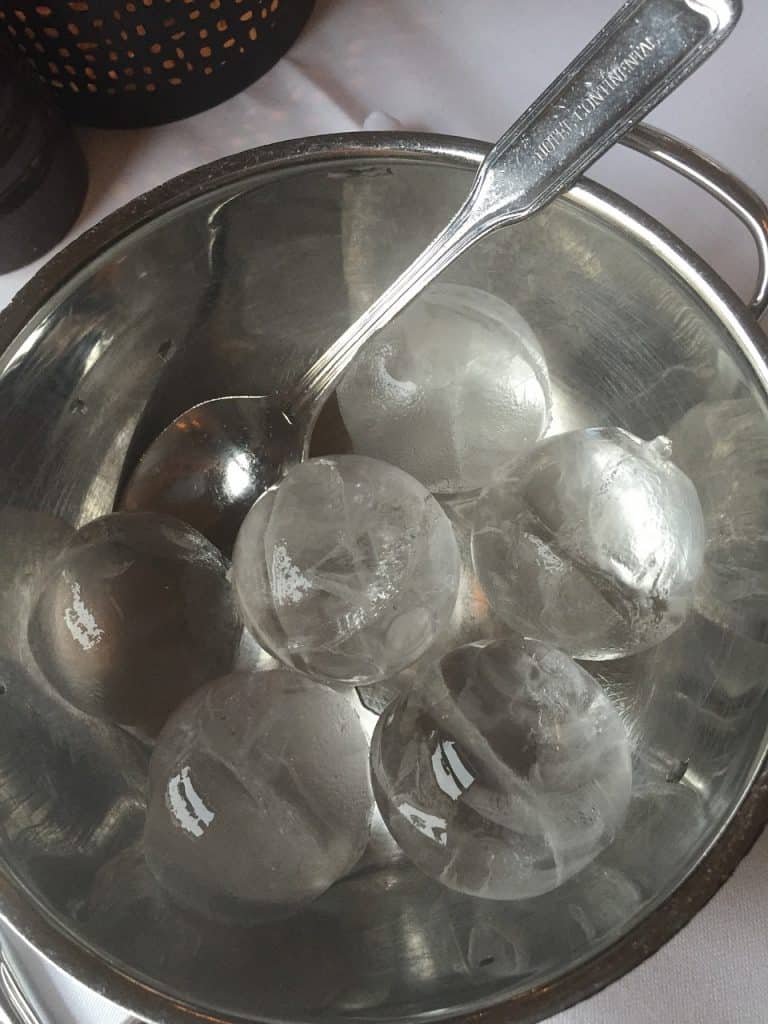
Ice cubes are wonderful for relieving pain, swelling or inflammation, and even redness caused by cystic acne. The ice will also work to close the pores which will prevent further dirt, oil, and dead skin cells from building up inside them.
Required Ingredients:
- Ice cubes made from purified water
- Small hand towel
Process:
- Gently cleanse the affected area and pat dry.
- Take one ice cube and place it directly onto the cystic acne.
- Move the ice cube in circular motions to stimulate healing.
- Continue to keep the ice cube on the cystic acne until it melts or until you become too sensitive to the cold.
- Repeat up to three times per day to assist with pain, swelling, and inflammation.
Notes: This remedy works best when it is used for single cystic acne nodules, not clusters. You can still apply ice to a clustered area, but you will need plenty of patience and time to ensure that each cyst has properly had contact with the ice.
7. Direct Application of Tea Tree Oil
Tea tree oil is a naturally occurring and extremely powerful anti-bacterial agent. When applied to acne, the tea tree oil will act fast to dry up the infected area, reduce any itchiness, and will disinfect pores.
Required Ingredients:
- Cotton swabs
- 100% Tea Tree Oil
Process:
- Cleanse and dry the affected area.
- Take a cotton swab and dip it into the tea tree oil.
- Gently wipe the cotton swab directly onto the cystic acne.
- Let dry and leave overnight for best results.
- Rinse with warm water in the morning.
- Repeat each evening until you see results.
Notes: This method is strictly for external use only as it can be poisonous if swallowed. If you intend on using this treatment, ensure that you will not have a sensitive reaction by testing a small patch of uninfected skin first before applying it to the cystic acne. For faster results, use skincare products that contain tea tree oil.
8. Applying an Egg White Mask

Raw egg whites contain high levels of proteins as well as riboflavins. Together these agents work to clear the skin, promote healthy cell growth, and work to smooth and soothe the skin.
Required Ingredients:
- 2-3 egg whites
- Small bowl
- Small, clean paint brush
Process:
- Break the eggs and separate the whites into a separate bowl.
- Cleanse the affected area and pat dry.
- Take the paint brush and dip it into the egg whites.
- Use the paintbrush to apply the egg whites to the skin.
- Let this mask rest on your face for five to eight minutes and rinse with cool or lukewarm water.
- Repeat this regime daily or every other day until you see visible results.
9. Direct Application of Coconut Oil
Coconut oil is a great way to rehydrate the skin while at the same time fighting against bacteria. The anti-bacterial agents found in coconut oil promote fast, yet gentle, healing.
Required Ingredients:
- Organic, unrefined coconut oil
- Cotton swab
Process:
- Cleanse the affected area and pat dry.
- Take a cotton swab and dip it into 5-10 drops of the coconut oil.
- Apply the oil directly to the skin with the cotton swab.
- Leave on the affected area overnight.
- Rinse with warm water in the morning.
- Repeat each evening until the cystic acne starts to fade.
10. Direct Application of Lemon Juice

Fresh lemon juice is yet another powerful agent that fights acne fast. The citric acid in the lemon works as an astringent, as well as containing anti-bacterial properties. The acidity of the lemon will help to remove dead skin cells and break down the cysts. Any swelling and redness caused by the cystic acne will also become reduced due to the citric acid in the lemon juice.
Required Ingredients:
- Cotton balls
- Juice from one to two freshly squeezed lemons
Process:
- Cleanse the area and pat dry.
- Dip a cotton ball into the lemon juice and apply it directly to the cystic acne.
- Let the lemon juice rest on the area for five to ten minutes.
- Rinse gently with warm water.
- Repeat twice per day until results are seen.
Notes: If you have sensitive skin, you can combine the lemon juice with equal parts of rosewater. Let this mixture rest on the affected area for fifteen to twenty minutes before rinsing. If you are not sure that your skin will have a sensitivity issue caused by the lemon juice, test an uninfected area first before applying it to any cystic acne.
11. Steaming the Affected Area

When steam is applied to an infected area, it will help the pores open up and push out any infection and dirt that is present. The steam will also penetrate the pores for a deep, and gentle cleansing which is highly effective in fighting cystic acne since it occurs in the deeper layers of the skin.
This particular steaming remedy is helpful for getting rid of cystic acne on the face.
Required Ingredients:
- Bowl
- Warm to hot water
- Clean towel
Process:
- Add some warm to hot water to a bowl.
- Let the face sit over the bowl.
- Cover your head and the bowl with the towel.
- Let the steam flow directly to your face for approximately ten to fifteen minutes.
- Repeat twice per day until you see results.
Notes: If you have cystic acne in other areas of the body, visiting a sauna will have the same effect on your cystic acne.
12. Adjusting and Monitoring Your Diet

Certain foods in your diet can contribute to worsening your cystic acne. While foods are not the cause of cystic acne, complex carbohydrates, sugars, and junk food can further irritate your skin. Cystic acne is also known to appear when a food allergy is present. Following a good diet regime will help to reduce and prevent cystic acne.
Required Ingredients:
- Water
- Fresh fruits and vegetables
- High amounts of protein
Process:
- Drink plenty of water each day to stay hydrated and flush toxins from your body.
- Cut out sugars and processed foods.
- Consume high amounts of fresh fruits and vegetables to access their vitamins and minerals.
- Reduce your dairy intake with the exception of yogurt.
Notes: Maintaining a healthy diet will not only be good for your cystic acne, but it will allow your body to function more efficiently.
13. Direct Application of Neem Oil
Neem oil contains several anti-bacterial agents that work fast to eliminate cystic acne. Neem oil will kill the bacteria that cause cystic acne as well as reducing any inflammation and redness. In addition to killing off the bacteria and helping to soothe the skin, Neem oil will help to balance out oily skin.
Required Ingredients:
- 100% Neem oil
- Cotton ball
Process:
- Cleanse and dry the affected area.
- Take a cotton ball with several drops of Neem oil and gently apply it to the cystic acne.
- Use circular motions to fully cover the affected area with the Neem oil.
- Repeat two to three times per day until the cystic acne has faded.
Notes: Neem oil is gentle enough to be left on the skin overnight.
14. Direct Application of Aloe Vera
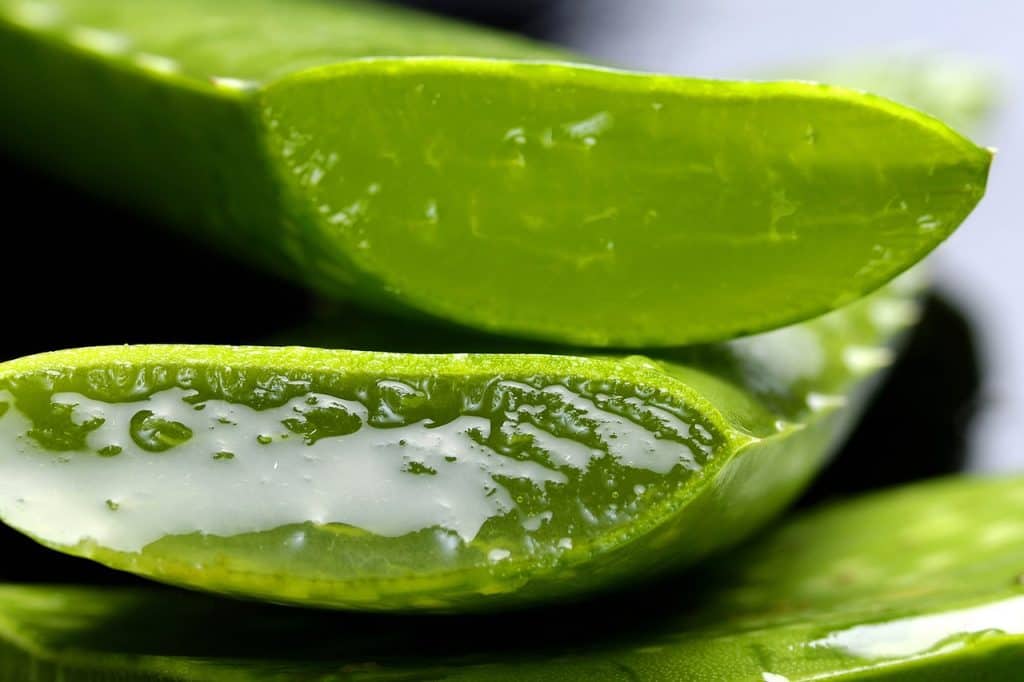
Aloe Vera gel is known as a great healing agent for a wide variety of skin conditions. The cooling and soothing effects from Aloe Vera will help your skin to heal in a gentle and calm way.
Required Ingredients:
- Aloe Vera gel
Process:
- Use an appropriate amount of Aloe Vera gel and apply it directly to the skin.
- Massage into the skin gently for up to three minutes or until there is no excess Aloe Vera left on the skin.
- Leave the Aloe Vera on the skin for up to five minutes before rinsing off.
- Repeat two to three times per day
- Notes: Fresh or bottled Aloe Vera will both show the same results. It is also optional for you to leave the Aloe Vera in the affected area overnight.
15. Applying a Potato Paste

Potatoes are known for being highly absorbent and when applied to the skin the potatoes will absorb any excess oil or dirt found on the skin. This will allow for any impurities to leave the pores and in turn promote faster healing. Potatoes will also reduce any inflammation or redness caused by cystic acne.
Required Ingredients:
- 1 large potato
- Vegetable peeler
- Blender
Process:
- Peel, wash, and cut the potato.
- Add a few large pieces into the blender.
- Blend the potato pieces until a thin paste forms.
- Apply this paste directly to the cystic acne.
- Let the paste stay on the affected area for up to ten minutes.
- Rinse and pat dry.
- Repeat this application twice per day to see best results.
Notes: Any sort of potatoes can be used for this remedy, just ensure they are fresh.
16. Drinking Green Tea

Drinking green tea regularly will help your body rid itself of any present toxins. Removing toxins will allow for faster healing times in any infected area. As well as removing toxins, green tea is high in anti-oxidants and catechins which will help promote healing from the inside and reduce inflammation and redness.
Required Ingredients:
- Green tea
- Hot water
Process:
- Brew the tea for three to four minutes in the hot water.
- Remove the tea and let cool.
- Once it is cooled, drink the tea.
- Drink up to three to four cups per day to assist in fighting cystic acne.
17. Applying a Juniper Oil Mixture
Juniper oil is widely known for its gentle astringent properties. Juniper oil will help tighten the skin, reduce the size of the pores, remove dirt, and cleanse the skin. Juniper oil also contains high amounts of anti-bacterial and anti-microbial properties that promote the healing of infection.
Required Ingredients:
- 3-4 drops of Juniper Essential Oil
- 1 small bottle of a carrier oil (grapeseed, coconut, or jojoba oil)
- One small bowl
- Cotton swab
Process:
- Combine the Juniper essential oil with the carrier oil of your choice.
- Clean the affected area and leave it wet.
- Mix well and use a cotton swab to apply directly to the cystic acne.
- Gently massage the mixture over the entire area.
- Leave for up to five minutes and rinse with warm water.
- Repeat up to twice per day for best results.
Notes: Juniper oil is quite strong and should only be used in small quantities. If any irritation occurs, discontinue this remedy.
18. Direct Application of Blue Tansy Oil
Prices pulled from the Amazon Product Advertising API on:
Product prices and availability are accurate as of the date/time indicated and are subject to change. Any price and availability information displayed on [relevant Amazon Site(s), as applicable] at the time of purchase will apply to the purchase of this product.
Blue Tansy Oil is known as an anti-inflammatory that assists in reducing swelling and redness caused by cystic acne. If you are experiencing clusters of cystic acne, this remedy will help to reduce the size of the cysts.
Required Ingredients:
- 3-4 drops of Blue Tansy Oil
- Cotton ball
Process:
- Cleanse the affected area and let it dry.
- Using the cotton ball, gently massage the Blue Tansy Oil onto the affected area.
- Let it sit on the skin for three to four minutes.
- Rinse with warm water.
- Repeat twice per day to assist in soothing your skin and reducing inflammation and redness.
Notes: Blue Tansy Oil can stain the skin, so it is best to combine it with a carrier oil (jojoba, coconut, or grapeseed).
19. Applying an Aspirin Mask
Aspirin works with your skin to reduce inflammation and pain. In addition, aspirin will act as a gentle exfoliate. Exfoliation is important to promote healthy cell regeneration as well as removing dirt, oil, and excess skin cells.
Required Ingredients:
- 1-2 aspirin tablets
- Mortar and pestle
- 1 teaspoon of lukewarm water
- Small bowl
Process:
- Crush the aspirin tablets using the mortar and pestle.
- Combine the crushed aspirin with warm water and mix until a paste has formed.
- Apply the paste directly to the affected area.
- Leave on the skin for up to fifteen minutes.
- Repeat daily until results are visible.
20. Direct Application of Mint

Mint is a powerful healing agent used to assist in a variety of skin conditions. The anti-bacterial and soothing properties of mint will help to heal and prevent cystic acne.
Required Ingredients:
- 20 fresh mint leaves
- Mortar and pestle
Process:
- Crush the fresh mint leaves using the mortar and pestle.
- Gently cleanse the affected area and pat dry.
- Apply the crushed mint leaves directly to the cystic acne.
- Leave the mint in place for up to fifteen to twenty minutes.
- Remove the leaves and rinse with lukewarm water.
- Repeat once a day, every other day until the cystic acne has healed.
Notes: This remedy works best when it is combined with another home remedy that can be used daily. For those who have sensitive skin, reduce the amount of time that the mint leaves rest on the skin.
Overall using these home remedies can be helpful for gentle and fast relief from this stubborn form of acne. It is important to remember to keep your skin clean and stick to a cleansing routine that works best for your skin type. In addition, using a variety of this list will help stop the growth of the cysts in their tracks and promote clear and healthy skin.
Make sure to discuss with your doctor or dermatologist to find out which natural remedy will work best for you before administering any home remedy.
In the end, herbal remedies for cystic acne will not only assist you in healing the cystic acne, no matter the location on the body, but they will also help prevent further cystic acne. Those looking forward to a future of clear skin should look to home remedies for cystic acne for gentle and effective healing and prevention.

